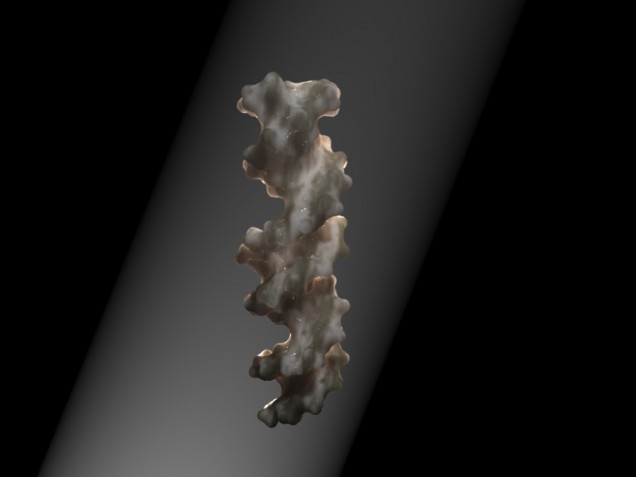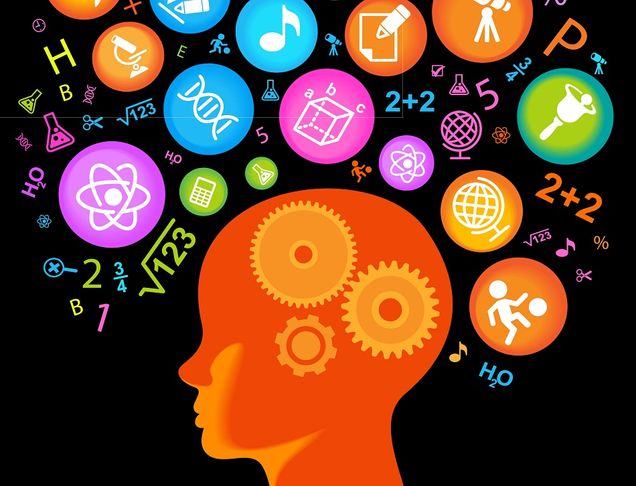One Step Closer: New Alzheimer’s Gene Discovered
Alzheimer’s Disease (AD) is the most prevalent form of dementia, and sixth leading cause of death in the US, affecting 60-80% of individuals 65 and older. The hallmark symptom of Alzheimer’s Disease is serious memory loss attributed to widespread cell death and loss of cortical mass. Treatments are currently used to stop and slow the progression of the disease, and improve patients’ quality of life as there is no cure for AD.
The molecular basis of neurodegeneration in Alzheimer’s Disease is in amyloid beta plaque formation and the accumulation of neurofilaments. Studies have shown that aggregates of -amyloid form amyloid plaques that are predominantly found in the brains of Alzheimer’s patients. The accumulation of amyloid plaques in the brain impairs neuronal function and leads the eventual death of cells.
Recently, researchers have pinpointed a gene involved with the immune system, IL1RAP, that increases the risk of developing AD. In a genome-wide analysis of over 500 individuals, those with the IL1RAP variant were found to have a greater accumulation of amyloid plaque over a two year period – independent of the previously highly speculated AD-linked allele APOE ε4.
IL1RAP, or Interleukin-1 receptor accessory protein, is associated with the immune system, and often regulates microglial activity (“the brain’s ‘garbage disposal system’.”) Studies have shown that microglial cells gather around plaques and clear amyloid deposits. The presence of IL1RAP displays altered microglial activity, featuring faster accumulation of amyloid plaque, increased cognitive decline, and increased cortical decline. Focusing on the IL1RAP pathway may be imperative in inducing plaque destruction, therefore halting the progression of Alzheimer’s Disease. Researching this pathway may be key in eventually creating a cure.
-Kavya Raghunathan
Sources
(Original Study) GWAS of longitudinal amyloid accumulation on 18F-florbetapir PET in Alzheimer’s disease implicates microglial activation gene IL1RAP- http://brain.oxfordjournals.org/content/138/10/3076
New Gene Linked to Amyloid Plaque Buildup in Alzheimer’s Disease Identified- http://neurosciencenews.com/il1rap-alzheimers-apoee4-genetics-2826/
New Alzheimer’s Gene Identified- http://www.medscape.com/viewarticle/852556
What Is Alzheimer’s?- http://www.alz.org/alzheimers_disease_what_is_alzheimers.asp
Image by user Freesci via Wikimedia Commons
What Really Happens When You Tickle Babies

Everyone loves to make babies laugh, whether it's by making funny faces, strange sounds, or tickling their toes. The funny thing is, while we know that younger infants start out with very limited visual capabilities, most of us have assumed that their sense of touch is developed enough to be linked with the visual system. A recent study shows that this is not the case.
Imagine you're in a room, maybe a few other people, you're just chilling there, sitting in a nice comfy chair, trying to take in your surroundings when all of a sudden, you feel a tickling sensation on your foot. But the weird thing is, it doesn't seem like any of your friends came over and tickled your foot. This would be a pretty strange situation, feeling this apparently source-less, isolated tickle. This is what happens with babies.
It seems as though infants live in a world where the only thing they register about touches on the body, is that they occur on the body. In fact, infants are much more talented than we are at identifying where on the body a touch occurs. For some reason, when an adult crosses their arms or legs, it becomes a lot harder for them to correctly identify the source of the touch. Infants are a lot more accurate when it comes to locating the source of the touch, which in an experiment they showed by moving the foot the experimenter touched. However, this heightened ability goes away at about six months.
What makes this interesting is that it shows us infants have an increased ability to localize a touch on their bodies that fades after only a few months. This could be a critical period for somatosensory development in infants or an evolutionary adaptation that was probably more useful many generations ago.
Moving away from the realm of speculation, what is definite is that babies cannot associate the person touching them with the touch itself. This may be disappointing for families to hear, or at least for those that believe their babies have a special affinity for their touch. As heartbreaking as it might be, unfortunately they don't, and any baby's response to the touch of a person is most likely due to their personal interpretation of the touch or natural instincts.
While this study depressingly reveals that babies aren't really all the emotionally attached to us when it comes to their physical sensations, it does give us more insight into how the sense of touch develops during the early years.
http://www.sciencedirect.com/science/article/pii/S0960982215010714
http://neurosciencenews.com/infants-tickle-sensory-neuroscience-2909/
The Myths Behind Migraines
A migraine headache is a severe unilateral and pulsating discomfort that is associated with extreme sensitivity to light, sound, smell, taste, and touch that generally lasts between 4 and 72 hours. According to Daniela Pietrobon and Jord Striessnig in “Neurobiology of Migraine,” migraines affect 6-8% of men and 15-25% of women in western countries. At least 1% of the population has a minimum of one day of migraine per week – which means around 2.5 million people in North America are sufferers. In fact, migraines are currently ranked as one of the most disabling chronic disorders. With such a high prevalence, it may seem peculiar how little is known about this condition. However, with the help of recent experimental studies, we are beginning to advance our understanding of the physiological and biological factors that contribute to triggering a migraine. Unfortunately, due to the lack of knowledge about this disease, there are many myths associated with it. I shall address some of these myths in the hope of broadening the general understanding of both the disease and its sufferers.
Myth 1: Migraines are simply bad headaches exaggerated by the sufferer.
Truth: Unfortunately, this is a common creed adopted by a vast majority of both the general public and many physicians. For the past century, there has been negative stigma placed on migraine sufferers. Society has long placed the blame of migraines on migraineurs, believing that their migraines are nothing more than headaches that are exaggerated by their sufferers and caused by stress. This is false. According to M.A.G.N.U.M., the National Migraine Association, “migraine is a disease, a headache is only a symptom.” A migraine sufferer can experience “nausea, vomiting, auras (light spots), sensitivity to light[, scent,] and sound, numbness, difficulty in speech, and severe semihemispherical head pain.” In addition, it is important to note that the cause of migraine pain has been found to be the opposite of the cause of most non-migranous headaches. Migraine pain is generally caused by the dilation of blood vessels in the brain, while other typical headaches appear to result from vasoconstriction. Further, migraines have been found to be genetically linked, where an individual has a 50% chance of suffering from migraines if one of his or her parents is a migraineur.
Myth 2: Migraines are caused solely by psychological factors.
Truth: While stress, depression, and anxiety can all worsen the symptoms of a migraine, they are rarely the sole cause. According to M.A.G.N.U.M., “migraine is a neurological disease, not a psychological disorder.” A migraine is a result of vasodilation in the cranial blood vessels, resulting in an overstimulation of the nerve synapses. Furthermore, migraines can be triggered by both controllable and uncontrollable factors. Controllable stimulants can include bright lights, loud noises, strong scents, and various foods (notably those that are aged or nitrate-latent). Uncontrollable triggers can include hormone changes and weather variations, including fluctuations in barometric pressure, temperature, and humidity. One can often lessen the risk of incidence of a migraine attack by reducing the controllable triggers. However, this is not always enough to fully prevent a migraine spell.
Myth 3: Any doctor should be able to effectively recognize and properly treat migraines.
Truth: Although members of the medical community are generally highly knowledgeable in their fields, migraines still remain one of the most misdiagnosed and mistreated diseases today. This is primarily due to the inherent lack of knowledge about and overall awareness of migraines and their symptoms. M.A.G.N.U.M. goes on to say that, “In fact, 60% of women and 70% of men with migraines have never been diagnosed with this disease.” These migraine sufferers are often misdiagnosed with clinical depression and/or other psychological disorders, leading doctors to mistreat them with various prescription drugs. Hopefully, as our understanding of this disease grows, we can educate both the medical community and the general public about migraines, in an attempt to vastly increase correct diagnoses and treatments.
According to Dr. Silberstein, M.D., F.A.C.P., Co-Director, The Comprehensive Headache Center at Germantown Hospital and Medical Center, in a letter to M.A.G.N.U.M., “Migraine sufferers must not only cope with their pain, but also with society’s misunderstanding of the disorder.” Therefore, both knowledge and education are paramount in the fight of ridding the stigmas surrounding this disease.
- Alexa Aaronson
Sources:
Migraines: Myth Vs. Reality
<http://www.migraines.org/myth/mythreal.htm>
Migraines and Headaches: Overview & Facts
<http://www.webmd.com/migraines-headaches/guide/migraines-headaches-overview>
Neurobiology of Migraine
<http://physiology.elte.hu/gyakorlat/cikkek/Neurobiology%20of%20migraine.pdf>
Pay attention, Millennials!
It seems like today, there isn't a single person without some type of smart phone. We look around, or more commonly, we look down at our screens, and everyone is either texting, tweeting, instagramming, or snap chatting. A short time ago, we had to actually have human interaction to give someone a message or to even just say hi. Now, we can Skype or Facetime and communicate with an LCD screen. That's not even the worst part. Recent studies have shown that our attention span has been rapidly decreasing because of this. On average, humans have the attention span of 8 seconds. Let me just repeat that really quick, 8 SECONDS. That is a shorter attention span than a goldfish. We cannot pay attention longer than a goldfish...
This short attention span is a huge problem in society. Children are failing to read books properly because they cannot hold their attention long enough to stay on the page. Adults cannot finish one project at a time because they get bored of it and want to move onto something else. The list goes on. So what are we going to do to stop this? We can't get rid of smart phones, which is the major cause of this loss of attention. We can't give every person Aderall, a medication used to treat attention deficit hyperactivity disorder, to keep them focused, as that would be inefficient and a waste of money. However, there is one thing that people can do for themselves to help increase their attention span: meditate.
When people hear the word mediation, they usually picture a person sitting on the floor with their eyes closed, their thumb and middle fingers touching, making the 'om' sound. Yes, this is one way to meditate, but what many people don't know is that there is a variety of other ways to meditate and be mindful. All you have to do is focus; pay attention to your thoughts and feelings in the current moment. I know that in today's society, asking someone to focus and pay attention is a very big request, but everyone is capabile of this, even if it's only for 8 seconds. The key to this is to do it a few times a day and increase your time spent meditating as each day passes. There have been countless studies done on mediation and attention. It has been proven that meditating at least once a day increases your attention span and improves many other things. How does meditation do this? Meditating every day increases cortical thickness in the brain. This has been proven through brain imaging before and after subjects went through different meditation programs. This increase in cortex leads to an increase in attention, which ultimately leads to better memory. When we are able to hold our attention longer, we retain more information so, simply put, we are able to remember more stuff.
There are so many positive effects of meditation. Not only does it lead to an increase in attention and memory, but it also reduces stress levels, increases relaxation levels, increases energy levels, decreases respiratory rate, increases blood flow, and so much more. Meditation definitely has the possibility of solving society's attention problem and so many more problems, but only if people take the short amount of time out of their day to do it.
-Gianna Absi
http://www.telegraph.co.uk/news/science/science-news/11607315/Humans-have-shorter-attention-span-than-goldfish-thanks-to-smartphones.html (ARTICLE ON ATTENTION SPAN)
http://www.ncbi.nlm.nih.gov/pmc/articles/PMC1361002/ (ARTICLE ON CORTICAL THICKNESS)
http://www.medpagetoday.com/Geriatrics/GeneralGeriatrics/34269 (ARTICLE ON BETTER MEMORY)
http://www.ineedmotivation.com/blog/2008/05/100-benefits-of-meditation/ (BENEFITS OF MEDITATION)
Fear Conditioning and PTSD
Ivan Pavlov is a name familiar to most, whether scientific expert or budding psychology student. Pavlov founded the basis of classical, or Pavlovian, conditioning, in which an animal or person learns to associate an initially meaningless stimulus in their environment with a stimulus that produces an automatic response, therefore eliciting the response when the newly meaningful stimulus is presented. Most famously, you might recognize Pavlov’s experiment where he conditioned dogs to associate sounds with the arrival of food, eventually producing a salivary response from the dogs with just the sound alone.
Following Pavlov, in 1919 a scientist named John B Watson became one of the first people to demonstrate fear conditioning: using Pavlovian conditioning to induce a fear response or a phobia. You may have heard of his notorious and ethically questionable “Little Albert” experiment, in which he induced phobias of rabbits and other normally pleasing objects in an infant through an association with loud, unpleasant noises.
Fear conditioning can be used for more than just questionable experiments on infants, though. In recent years, scientists have been using what we know about fear conditioning to study disorders like PTSD (Post Traumatic Stress Disorder), in hopes of finding new treatments.
PTSD, or post traumatic stress disorder, is a disorder where fear learned in a traumatic situation is triggered by seemingly neutral stimuli in ordinary, safe situations, producing detrimental physiological and behavioral responses. Studies have shown that the brain areas affected in PTSD - mainly the amygdala, hippocampus, and prefrontal cortex - are similar to the brain areas affected in rodents who have been fear conditioned. Evidence suggests that flawed synaptic plasticity, the ability for the brain to rewire itself, could be part of the cause of PTSD.
During fear conditioning, rodent’s brains rewire themselves to make a connection between a certain stimulus and a fear response. During extinction, the process in which a conditioned response to a stimulus goes away, the synaptic connections rewire themselves, no longer associating the certain stimulus to a fear response. In patients with PTSD, it is possible that the flawed synaptic ability hinders the fear response from being overwritten effectively. This results in the production of an otherwise unwarranted fear response in patients, when exposed to neutral stimuli.
By attempting to understand the synaptic basis for PTSD using animal models of fear conditioning, scientists can work toward developing new medications that effect chemical action at the synapses. Hopefully, these medications will be able to lessen the symptoms of PTSD in patients and eventually work toward more accessible treatment for flawed synaptic plasticity, and fear and anxiety disorders in general.
-Kristen Burke
Sources:
Heatherton, Todd, and Diane Halpern. "Chapter 6, Learning." Psychological Science. By Michael Gazzaniga. 5th ed. New York: W W Norton, 2013. 222-37. Print.
Mahan, Amy L., and Kerry J. Ressler. "Fear Conditioning, Synaptic Plasticity and the Amygdala: Implications for Post Traumatic Stress Disorder." Cell Press 35 (2012): 24-35. Web. 13 Oct. 2015.
The Effect of State and Trait Anxiety on Attention

A topic that has become more and more prevalent over the last few years is the effect of anxiety on attentiveness. How anxiety affects attention depends on the type of anxiety that is experienced. Most people experience state anxiety, in other words, a higher threat value is placed on a particular situation or stimulus. Feeling anxious during a very important midterm is an example of state anxiety. Another type of anxiety is trait anxiety, which is the tendency to focus one’s attention towards the stimulus causing the anxiety. In other words, to think only about the exam, instead of non-anxiety inducing stimuli.
Attention itself is composed of three independent networks: the alerting network, the orienting network, and the executive network. The alerting network is responsible for maintaining an appropriate level of sensitivity to the stimulus through activation of the right frontal and parietal areas of the brain. The orienting network attends to information coming from a specific stimulus among numerous sensory stimuli. This network is associated with activation in the superior parietal lobe, frontal eye fields, and temporoparietal junction. The executive network is responsible for conflict resolution and voluntary action control of the stimulus, and is related to the medial frontal areas of the brain, as well as the cingulate gyrus and lateral prefrontal cortex.
Two experiments were performed by the Department of Psychology and Physiology at the University of Granada and the Department of Neurology at Washington University School of Medicine to learn more about the relationship between these two different types of anxiety and attention. The first focused on trait anxiety, while the second focused on state anxiety.
The first experiment featured a group of individuals with either high or low trait anxiety, and another group of individuals with average trait anxiety. The two groups were made to perform various computer tasks that played to each specific network of attention. What the researchers found was that individuals with high-trait-anxiety had a more difficult time controlling interference in the computer tasks than those with low-trait-anxiety. However, the results of the alerting and orienting tasks were very similar for both groups. Those with high-trait anxiety had a difficult time responding to the task’s demands.
The second experiment also separated participants into two groups for anxious mood induction and non-anxious mood induction. One group was shown pleasant pictures and the other was shown unpleasant pictures, both groups were tasked with becoming emotionally involved in what they were seeing. In the group shown the negative stimuli (the unpleasant pictures), more emphasis was put on the lack of control over the negative circumstances represented in the image. The positive stimuli (the pleasant pictures) in the other group focused more on goal achievement. The individuals shown the negative stimuli revealed higher levels of anxiety than those shown the positive stimuli.
The results of the experiments revealed that both state and trait anxiety have a significant impact on attentional networks. State anxiety was found to have a greater impact on the alerting and orienting networks of attention, because they are more closely related to contextual sensitivity and vigilance processes. High state anxiety was found to be the result of a heightened response in the amygdala and superior temporal sulcus (regions activated during the assessment of valence facial expressions). It was also found that the executive network was less efficient in those with high-trait-anxiety than those with low-trait-anxiety because the executive network determines control, which is what those with high-trait-anxiety were lacking. High trait anxiety was related to a reduced prefrontal response (the region related to controlling complex processes). It was concluded that trait anxiety was responsible for a “reduced-general cognitive control capacity”.
-Allyson Pulsoni
Sources
1. Attention and Anxiety: Different Attentional Functioning Under State and Trait Anxiety
http://pss.sagepub.com.ezproxy.bu.edu/content/21/2/298.full.pdf+html
Image by Evan89, via Wikimedia Commons
Gene Regulation and The Hippocampus
Memory has always been and still is a subject of interest for many neuroscientists. Whether it pertains to increasing memory or finding cures to neurodegenerative diseases such as Alzheimer’s, memory is always a topic of interest for neuroscientists. Recently, there have been studies conducted by both the Institute of Basic Science and Advancing Science, Serving Society (AAAS) that have found genes that are suppressed or inhibited that prevent the formation of these long term memories. Increased hippocampal activity also is shown to have treatments toward age related memory loss, which could relate to the genes found by the AAAS and the IBS.
The IBS Center, using a technique called Ribosome profiling, was able to analyze the hippocampus of a mouse model and showed that gene regulation actually suppressed the formation of memory. According to the article “When an animal experiences no stimulus in an environment the hippocampus undergoes gene repression which prevents the formation of new memories”, showing activity of the neurons help prevent this gene regulation which allows the formation of memory. Natasha Pinol from the AAAS also found a similar action in his studies however showed that one estrogen receptor actually helped regulate the memories after learning instead of inhibiting it, as Jun Cho for IBS has found.
Although these particular genes themselves might still have their purposes unknown to the world, these findings can definitely be used to help with age related memory loss such as Alzheimer’s disease. Through a study done at Northwestern University by Marla Paul, it is shown that decreasing certain activity and increasing other activity could lead to an increase in memory formation. Although they did not target the same genes that Cho and Pinol targeted, this really shows how much more we are learning about the hippocampus, as memory is formed through a moderation of genes.
Sources:
http://neurosciencenews.com/memory-formation-gene-suppression-2799/
http://neurosciencenews.com/hippocampus-genetics-memory-formation-2807/
http://neurosciencenews.com/ca3-hippocampus-neurons-memory-aging-2709/
- Albert Wang
Is Music Affecting Our Memory?
 Music has been scientifically proven as beneficial, having effects such as reducing stress, enhancing blood vessel function, improving sleep quality, and improving cognitive performance. However, one thing that music does not improve is one’s ability to focus. In a recent study conducted at Georgia Institute of Technology, researchers found that listening to music decreased the efficiency of remembering names.
Music has been scientifically proven as beneficial, having effects such as reducing stress, enhancing blood vessel function, improving sleep quality, and improving cognitive performance. However, one thing that music does not improve is one’s ability to focus. In a recent study conducted at Georgia Institute of Technology, researchers found that listening to music decreased the efficiency of remembering names.
Participants in this study were asked to match faces to names, a task that involves associative memory. In associative memory, a memory of an event or place is triggered by the recollection of something associated with it. Music is heavily involved in associative memory, which is why it can be upsetting to listen to certain songs if you have associated them with an ex-significant other. Much like other types of memory, associative memories are processed in the hippocampus of the brain.
Some participants completed this name-face test in silence, while others had non-lyrical music playing in the background. All age groups of participants agreed that the music was distracting from the test, but only the scores of the older adults were affected by it.
Nanotechnology: Creating the perfect human?

How would you feel if you had the choice of having billions of tiny robots injected into your body? A pretty unpleasant thought, am I right? What if I told you that these tiny robots could repair any mutation you may have in your DNA? Sound far-fetched? Well, scientists have been making huge breakthroughs in this! It's called nanotechnology. These small robots are like tiny computers that are coded to attach to specific cells in your body and carry them from point A to point B. These tiny robots, 1-100nm in size (or 1 and 100 billionth of a meter!), are like transporters; they pick up the target cell at point A and move it to point B. Point B can be anything from the trash, (cell death) if the cell is not needed anymore, to another part of the body where the cell is needed. They also have the ability to reprogram a cell's biology. If more of one cell is needed in a particular area it can bring that cell to the specified area and "tell" it to replicate. Basically, nanotechnology will eventually perfect every single cell in your body.
Read You Like a Book
When I read a book, I get so immersed in the lives of the characters, I find myself anxious and on edge even though I know Katniss’ and Peeta’s tragic romantic life have no bearing on my reality. The fact that characters fabricated from mere words can have this effect on us is pretty incredible. Roel Willems and Annabel Nijhof thought so too apparently, as they recently published a study revealing the neurological effects of listening to audiobooks.
In the experiment, researchers had the subjects listen to chapters of several different audiobooks and recorded their neurological responses using functional Magnetic Resonance Imaging (fMRI). By analyzing the results, Willems and Nijhof determined that the subjects focused most on either the actions of characters or the feelings and intentions of characters. In the subjects that reported to prefer empathizing with the characters more, the fMRIs showed heightened activity in the anterior medial prefrontal cortex, whereas those that reported enjoying the action aspect of the story more had elevated activity in the motor cortex. More






